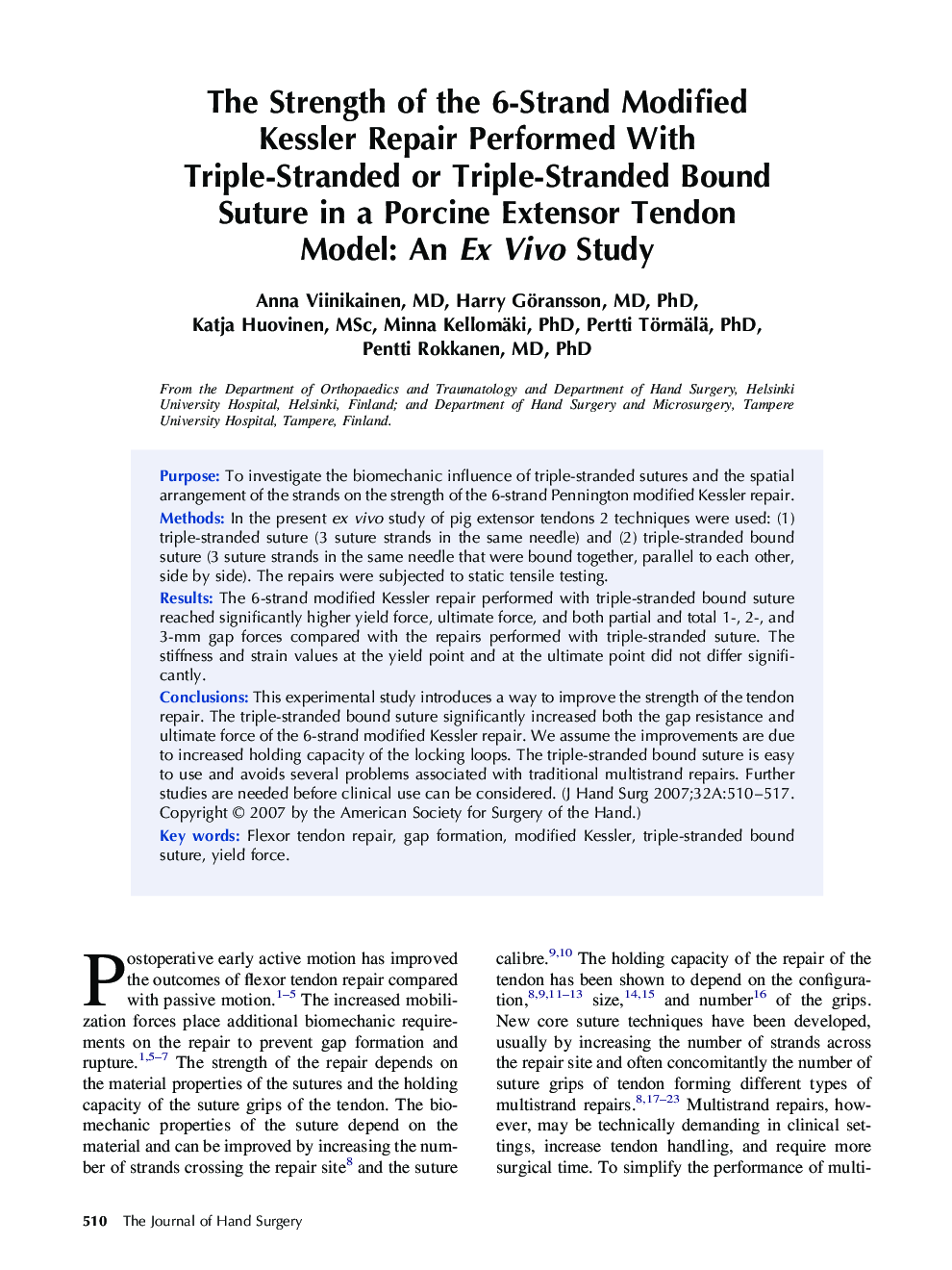| Article ID | Journal | Published Year | Pages | File Type |
|---|---|---|---|---|
| 4071529 | The Journal of Hand Surgery | 2007 | 8 Pages |
PurposeTo investigate the biomechanic influence of triple-stranded sutures and the spatial arrangement of the strands on the strength of the 6-strand Pennington modified Kessler repair.MethodsIn the present ex vivo study of pig extensor tendons 2 techniques were used: (1) triple-stranded suture (3 suture strands in the same needle) and (2) triple-stranded bound suture (3 suture strands in the same needle that were bound together, parallel to each other, side by side). The repairs were subjected to static tensile testing.ResultsThe 6-strand modified Kessler repair performed with triple-stranded bound suture reached significantly higher yield force, ultimate force, and both partial and total 1-, 2-, and 3-mm gap forces compared with the repairs performed with triple-stranded suture. The stiffness and strain values at the yield point and at the ultimate point did not differ significantly.ConclusionsThis experimental study introduces a way to improve the strength of the tendon repair. The triple-stranded bound suture significantly increased both the gap resistance and ultimate force of the 6-strand modified Kessler repair. We assume the improvements are due to increased holding capacity of the locking loops. The triple-stranded bound suture is easy to use and avoids several problems associated with traditional multistrand repairs. Further studies are needed before clinical use can be considered.
